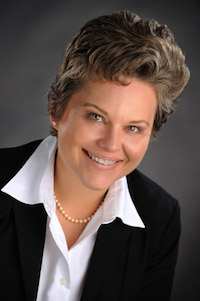The nature of sales has changed. Face-to-face sales in distribution are not as common as they once were. We’re finding that more and more these days, those kinds of direct transactions are no longer a dominant means of selling a product or service. When there once was a time when a sales team was the “go-to” information resource for potential customers researching a business, today, in the age of quick and easy web searches, that role is being replaced.
In areas where face-to-face sales in distribution are still taking place, there is another concern to think about. As a business owner, is your relationship with your customer really with your company? Or, is the relationship between your salesperson and your customer?
If you suspect that the relationship is owned (and, therefore, controlled) by your salesperson, you have some work to do. Imagine what will happen if that salesperson moves on to another company, especially a competitor.
Distributors often find it difficult to create a relationship that is personalized, yet still reaches beyond any one person in your company. What many companies have found as a solution to this issue, however, is that despite the strong bond with your salesperson, when you give a customer quality service, and that quality service is given by more than just the salesperson, the relationship between your customer and your company is strengthened.
At one point in time, when face-to-face sales in distribution was the main way sales were conducted, one of a business’s biggest expenses would be the cost of their salesforce.
In today’s world, consider another approach to sales that may give you a greater ROI on your salespeople while strengthening your company’s relationships with your customers. This method actually helps direct your sales team’s focus toward the areas of your business where they can generate the best results.
For example, tactics such as content marketing, website tracking, and lead scoring will qualify leads before they are funneled to your sales department, generating a precise profile of what each customer is looking for and what is most important to them. This shortens the sales cycle significantly while bringing stronger leads to your sales team.
Additionally, if you feel you don’t know your customers well enough to know what is most important to them or what they’re looking for, consider using surveys and marketing automation tools to complete your due diligence.
Moving From Face-To-Face Sales to Handing Off to Customer Service
While in the past an outside sales representative was often the primary point of contact between a customer and a business before, during, and after the sale, it would be much smarter to utilize a highly trained and specialized customer service representative or inside sales rep to take on that role. Once the sales department has accomplished their job of closing a deal, the customer can be transitioned to a customer service representative, freeing up your salesperson to pursue the next sale.
Warming up a lead via targeted marketing, closed via your sales team, then passed over to customer service and inside sales to nurture for repeat sales will build a long-term relationship with the customer using services from more than just one person. Once your sales team closes the deal, customer service and/or the inside sales department should provide the ongoing support.
Creating this kind of balance between sales and customer service (with the goal of building long-term relationships with customers) has major benefits. In addition to freeing up your salesperson to pursue their next sale, it can also lead to repeat business, as well as quality testimonials and referrals to new potential customers. Building a reputation of giving excellent customer service is also one more way to differentiate your business from your competition.
Hurlbert Consulting
 Dr. Jeanne Hurlbert, President of Hurlbert Consulting, brings to her role as STAFDA’s endorsed customer service consultancy expertise in sociology and survey research. After spending more than 25 years in academia, she now uses her extensive behavioral science expertise to help companies like yours distinguish yourselves through customer service. What sets her approach to customer service apart is that she begins by helping companies meld research and marketing to find out exactly (a) what their customers want and (b) how well they’re succeeding in giving customers what they want. Jeanne provides STAFDA members with 30 minutes of complimentary consulting per year; please identify yourself as a STAFDA member when you contact her. You can schedule a consult with her by going to www.ConciergeCustomerService.com or you can call her at 888-590-9677. And, if you’d like to complete her complimentary assessment, just go to www.FixYourService.com.
Dr. Jeanne Hurlbert, President of Hurlbert Consulting, brings to her role as STAFDA’s endorsed customer service consultancy expertise in sociology and survey research. After spending more than 25 years in academia, she now uses her extensive behavioral science expertise to help companies like yours distinguish yourselves through customer service. What sets her approach to customer service apart is that she begins by helping companies meld research and marketing to find out exactly (a) what their customers want and (b) how well they’re succeeding in giving customers what they want. Jeanne provides STAFDA members with 30 minutes of complimentary consulting per year; please identify yourself as a STAFDA member when you contact her. You can schedule a consult with her by going to www.ConciergeCustomerService.com or you can call her at 888-590-9677. And, if you’d like to complete her complimentary assessment, just go to www.FixYourService.com.





